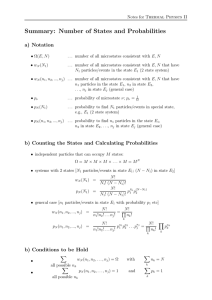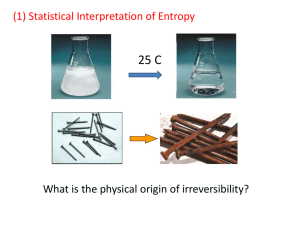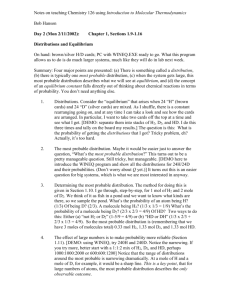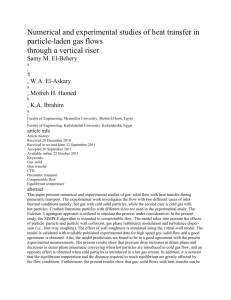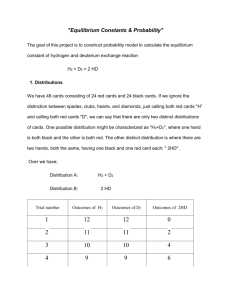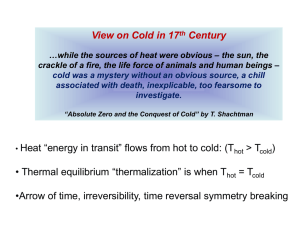Notes on teaching Chemistry 126 using Introduction to Molecular
advertisement
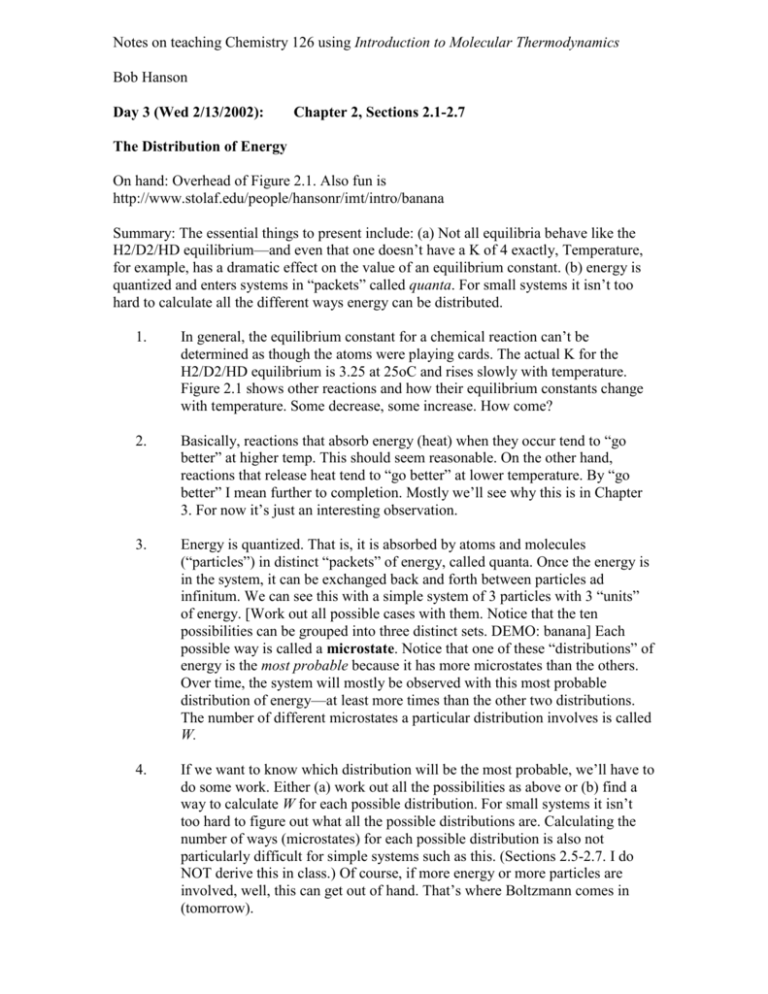
Notes on teaching Chemistry 126 using Introduction to Molecular Thermodynamics Bob Hanson Day 3 (Wed 2/13/2002): Chapter 2, Sections 2.1-2.7 The Distribution of Energy On hand: Overhead of Figure 2.1. Also fun is http://www.stolaf.edu/people/hansonr/imt/intro/banana Summary: The essential things to present include: (a) Not all equilibria behave like the H2/D2/HD equilibrium—and even that one doesn’t have a K of 4 exactly, Temperature, for example, has a dramatic effect on the value of an equilibrium constant. (b) energy is quantized and enters systems in “packets” called quanta. For small systems it isn’t too hard to calculate all the different ways energy can be distributed. 1. In general, the equilibrium constant for a chemical reaction can’t be determined as though the atoms were playing cards. The actual K for the H2/D2/HD equilibrium is 3.25 at 25oC and rises slowly with temperature. Figure 2.1 shows other reactions and how their equilibrium constants change with temperature. Some decrease, some increase. How come? 2. Basically, reactions that absorb energy (heat) when they occur tend to “go better” at higher temp. This should seem reasonable. On the other hand, reactions that release heat tend to “go better” at lower temperature. By “go better” I mean further to completion. Mostly we’ll see why this is in Chapter 3. For now it’s just an interesting observation. 3. Energy is quantized. That is, it is absorbed by atoms and molecules (“particles”) in distinct “packets” of energy, called quanta. Once the energy is in the system, it can be exchanged back and forth between particles ad infinitum. We can see this with a simple system of 3 particles with 3 “units” of energy. [Work out all possible cases with them. Notice that the ten possibilities can be grouped into three distinct sets. DEMO: banana] Each possible way is called a microstate. Notice that one of these “distributions” of energy is the most probable because it has more microstates than the others. Over time, the system will mostly be observed with this most probable distribution of energy—at least more times than the other two distributions. The number of different microstates a particular distribution involves is called W. 4. If we want to know which distribution will be the most probable, we’ll have to do some work. Either (a) work out all the possibilities as above or (b) find a way to calculate W for each possible distribution. For small systems it isn’t too hard to figure out what all the possible distributions are. Calculating the number of ways (microstates) for each possible distribution is also not particularly difficult for simple systems such as this. (Sections 2.5-2.7. I do NOT derive this in class.) Of course, if more energy or more particles are involved, well, this can get out of hand. That’s where Boltzmann comes in (tomorrow).
